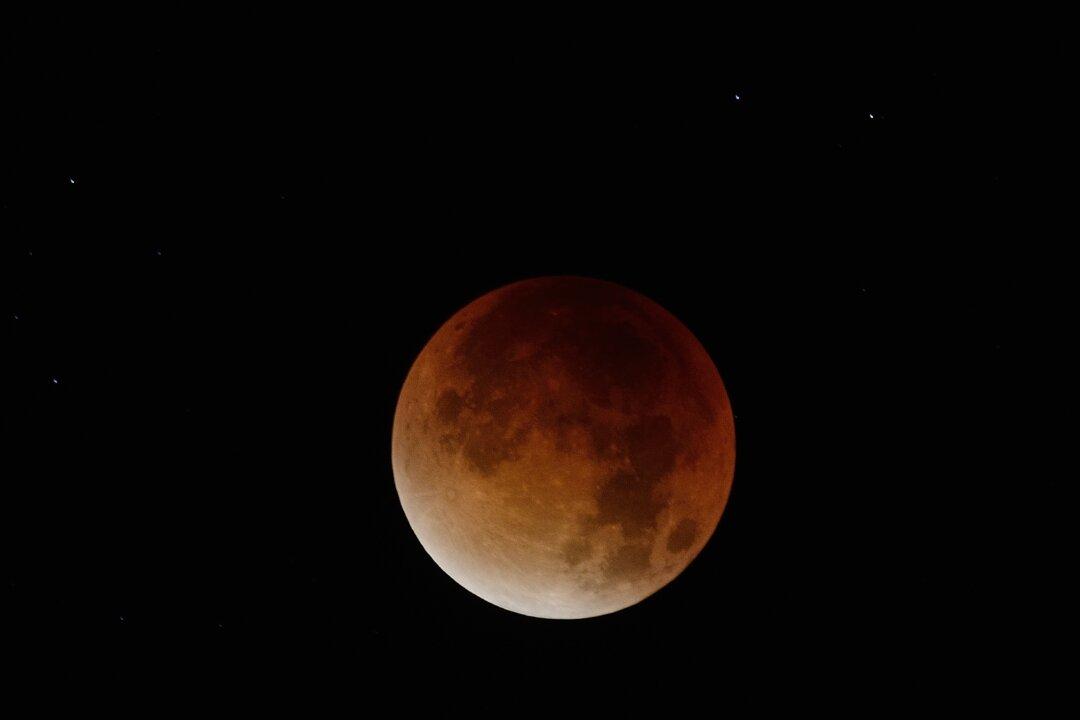NEW YORK—Throughout last week, as people fretted over the yuan devaluation and pope traffic, Joe Delfausse worried about the clouds.
It was imperative that there wouldn’t be too many clouds on the evening of Sept. 27, when a rare cosmic aligning would occur. Delfausse believed the red supermoon lunar eclipse was going to change people’s lives.
Delfausse is not religious or superstitious. He is an organizer with the Amateur Astronomers Association of New York (AAA), a group that meets once a week, mostly in the city, for a glimpse of the galaxy. They have around 700 members. Although not everyone comes out every week, many meet at locations such as Central Park, Lincoln Center, and Brooklyn Bridge Park.
“When people physically see a planet, the rings of Saturn, or a lunar eclipse through a telescope, it puts themselves in perspective in the cosmos,” Delfausse said, his soft eyes widening behind spectacles. “I’m a speck in the cosmos. My problems about life, death, and the minutia of daily life, are really nothing.”
Delfausse said it was a shame that many people have never seen a planet through a telescope. Around 100 people actively bring their telescopes to events to share with the public—most of the time for free.
The weather report predicted widespread clouds on the night of the lunar eclipse. But the clouds cleared in Chelsea by 8:30 p.m., as a mirthful crowd gathered on the High Line on top of 14th Street to watch the eclipse.
There were drinks. A man played lunar-themed songs— David Bowie’s “Space Oddity,” and Bonnie Tyler’s “Total Eclipse of Heart”—on his violin.
Delfausse, wearing khakis and a brown sweater vest, walked around and talked to people about the moon.
“Many eclipses only partially cover the moon,” he said. This was a total eclipse, where the moon was completely covered by the Earth’s shadow.
Everyone was waiting to view a rare combination of a total lunar eclipse and the fact that the moon was orbiting at a point where it was the closest distance to Earth. The next time these combined factors will occur will be in 2033.
Just like that, a piece of the moon went away at 9:07.
“I feel so humbled,” said Daniel Simon, 35, a student. “To see it with my own eyes. … I’m going to sleep well tonight. I’m going to fall asleep smiling.”
By 10:11, the earth’s shadow completely covered the moon. The sun, as it was passing through the Earth’s atmosphere, scattered red light on the moon.
“I’m not religious,” Delfausse said. “But it’s like seeing God sitting on a bench in the park. Wouldn’t that change your life? This is the closest thing to that.”
Chasing Stars
When a bystander on the High Line commented that the moon was not that red, Partha Mitra, a neuroscientist, took offense.
“This is not the movies,” he said. “This is real life.”
Mitra remembered watching the constellations move across the sky as a child in Kolkata, India, and feeling comforted by the thought that there would always be regularity in the cosmos regardless of the chaos on Earth.
“It gives you humility,” he said. “The sense that there is this law in the universe that is not subject to human power.”
That is why Mitra once flew to Las Vegas, just because it had the clearest sky to view the transit of Venus, when the planet appeared as a small black dot crossing the sun. And why he once flew to Connecticut to watch the stars fall during a meteor shower.
“It’s something that has existed before us and will exist after us,” he said. “It’s not subject to the arbitrariness of our lives.”
Even though the clouds returned after two hours and covered the red super moon, people were not disappointed.
Gary Atlas, a 64-year-old retired carney who used to operate dart games at Coney Island, hugged a stranger and laughed.
“It will be another 18 years before this happens again,” Atlas said. “This might be the last time I see it. It’s just so good to see it.”




